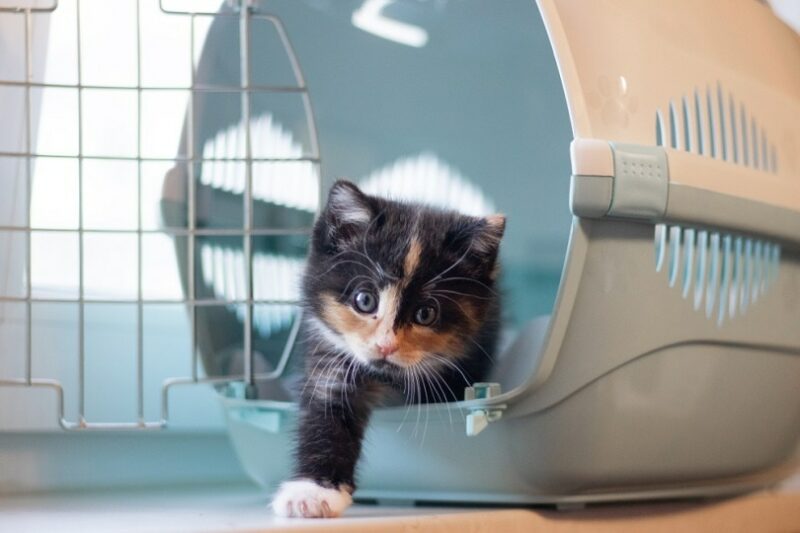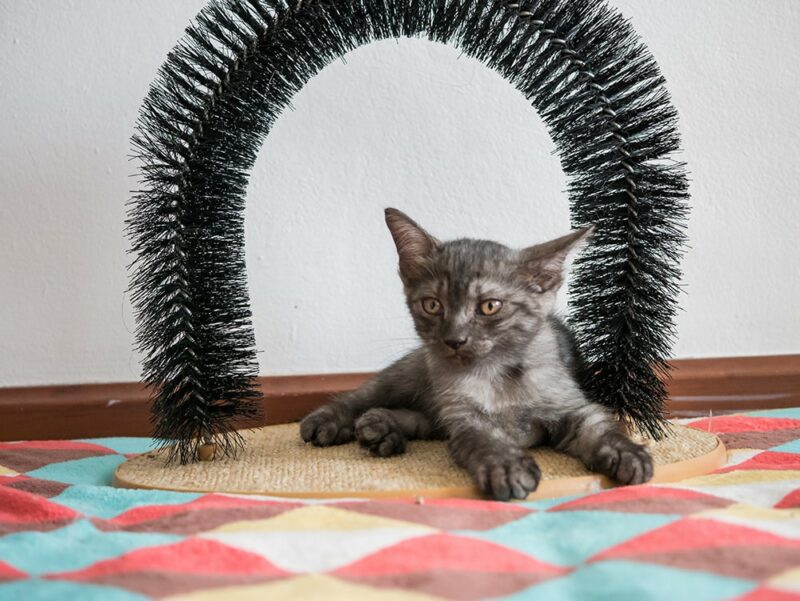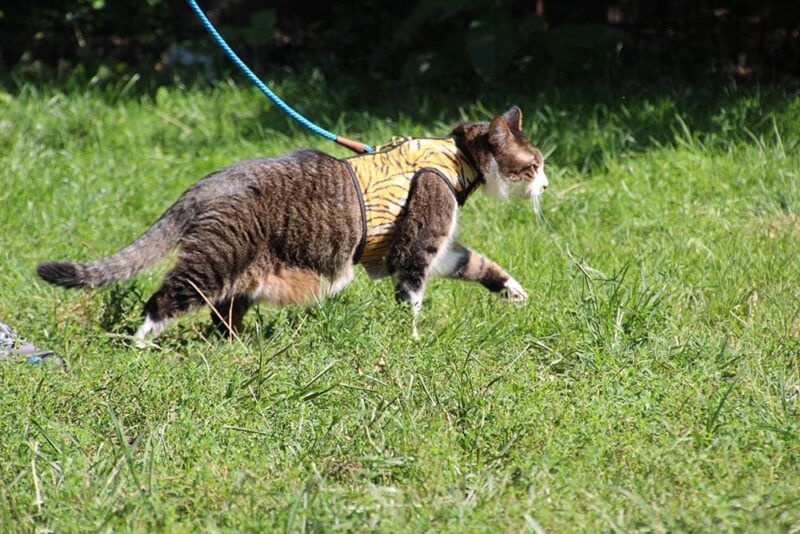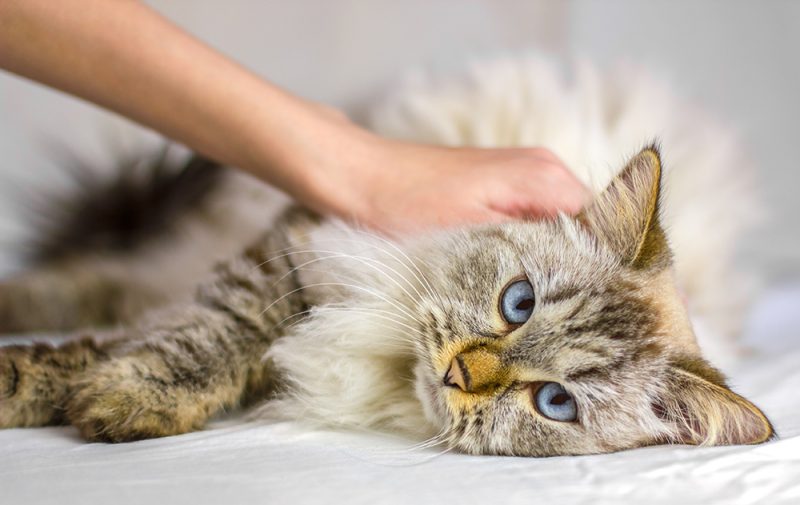In this article
How do you get your cat to the vet? The safest way to get them to the vet or places requiring a car ride is by putting them into a carrier. But this is easier said than done. Why does your car hate the carrier, and what can you do about it?

Why Won’t My Cat Get Into the Carrier?
Many cats don’t like getting in the carrier because they associate it with stressful or frightening situations. Think of the last time you put your cat in a carrier. Most likely, you were taking them to the vet, and no cats enjoy a vet visit!
If you need to speak with a vet but can't get to one, head over to PangoVet. It's an online service where you can talk to a vet online and get the advice you need for your pet — all at an affordable price!

If you adopted your cat, they might even associate getting in a carrier with a new home and all the potentially scary things that go along with that.
Carriers can be intimidating for other reasons. Maybe your cat gets carsick. They can’t tell us how nauseated they’re getting, but you can monitor them for drooling heavily, a key indicator of nausea.
What if you were in an accident previously, and your cat associates the carrier with being jostled around? That carrier likely kept them from getting injured seriously, but no one wants to be tossed around in a plastic contraption.
Cats like to be able to get away from perceived danger, and they can’t do that in a carrier. It confines them.

De-Escalating the Stress Over Getting Into a Cat Carrier
So, we know there are many reasons why our cat won’t get into the carrier. Let’s look at some things you can do to decrease your cat’s stress over the carrier.
The number one mistake with carriers is that we only pull them out right before we try to put our kitties into the carrier. Unless you have an urgent vet appointment because your cat is sick, let’s try to step back and make the process easier from the beginning.
A week or two before you need to get your cat into the carrier, bring it into the house and set it somewhere near where your cat frequents. Ensure it’s clean and leave it open so your cat can investigate it.
Place a blanket or towel from home into the carrier if it’s one that your cat prefers; all the better. If your cat likes toys, put a couple in the carrier.
Feed your cat near the carrier. Once they’re comfortable with the carrier, you can even try feeding them inside it.
Feliway pheromone products are great to spray on and around the carrier to decrease your cat’s stress.
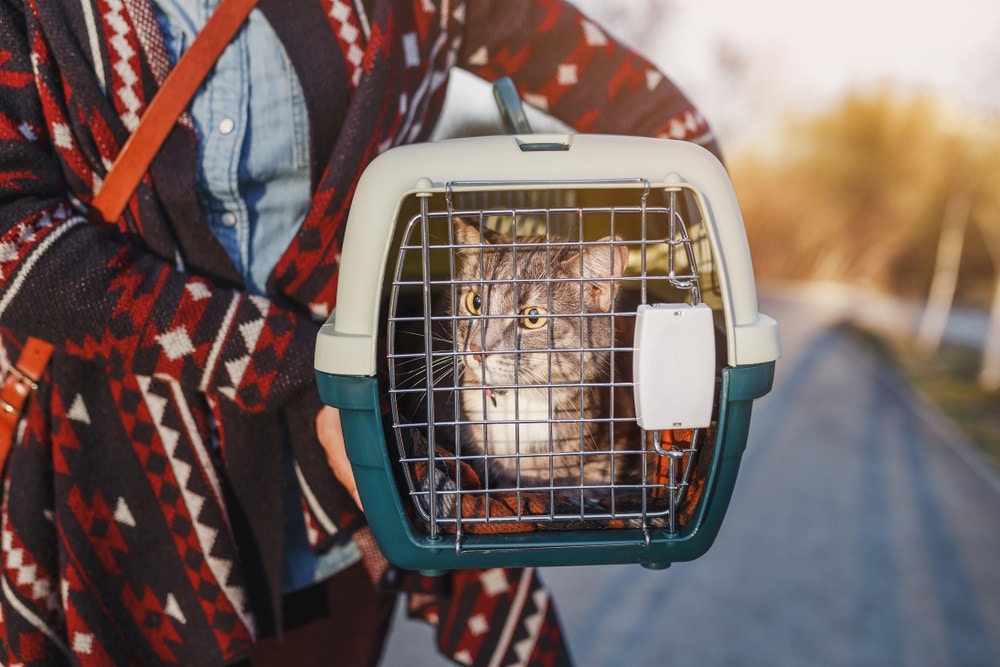
Tips for Getting Your Cat Into a Carrier
If you’re lucky, your cat will walk into the carrier with some cajoling and treats. Don’t despair if they’re disinterested.
The easiest way to get a cat into a carrier is to set the carrier on its end with the door open. Use a blanket or a towel to gently pick your cat up, wrapping it around them so they don’t use their limbs to push off from the carrier and escape. Be careful not to dump your cat or drop it; tip them into the carrier. Quickly close the carrier door.
If your cat is still stressed about the carrier, talk to your veterinarian about sedation options that might help. Vets commonly prescribe gabapentin as an anti-anxiety medication for travel and appointments. Feliway can also make a huge difference for your kitty by reducing stress and anxiety.
If your cat still has trouble getting into the carrier, try a different style. Nowadays, there are strollers and backpack carriers. Some cats prefer triangular carriers that zip open and closed.
You might have to try a few models to pick the best carrier that will serve you and your cat.

Frequently Asked Questions (FAQ)
Should I put catnip in my cat’s carrier?
You can put catnip in your cat’s carrier to help calm them. If your cat likes catnip, it can even be an attractant and encourage them to climb into the carrier.
What’s so special about catnip? The key ingredient in this herb is nepetalactone, which can trigger relaxation and happiness, as well as reduce anxiety.

What should you put in the bottom of a cat carrier?
The best bedding in your cat’s carrier is a blanket or towel that smells like home. You want your cat to be comfortable while they’re traveling.
While these washable bedding options tend to be preferred, if your cat has accidents in the carrier, consider using potty pads to line the bottom. These disposable liners can be tossed away once you get to your destination.

Conclusion
Many cats refuse to go into a carrier willingly, which can make it challenging to take them to essential places such as your vet’s office or groomer. With a bit of patience, you can help your cat adjust to seeing the carrier and make it easier to get them inside.
Featured Image Credit by: alenka2184, Shutterstock

